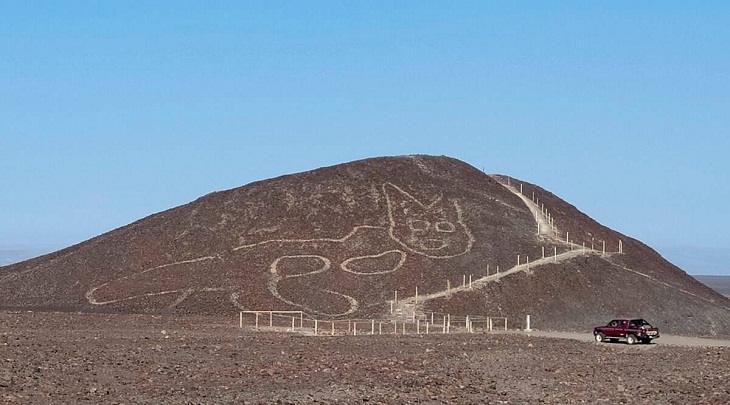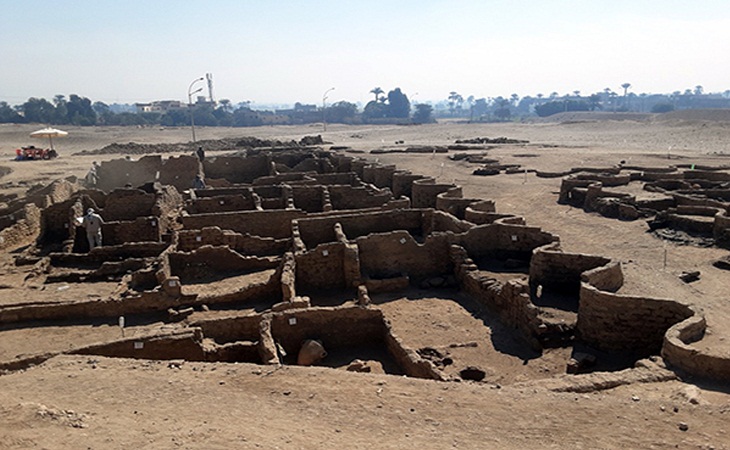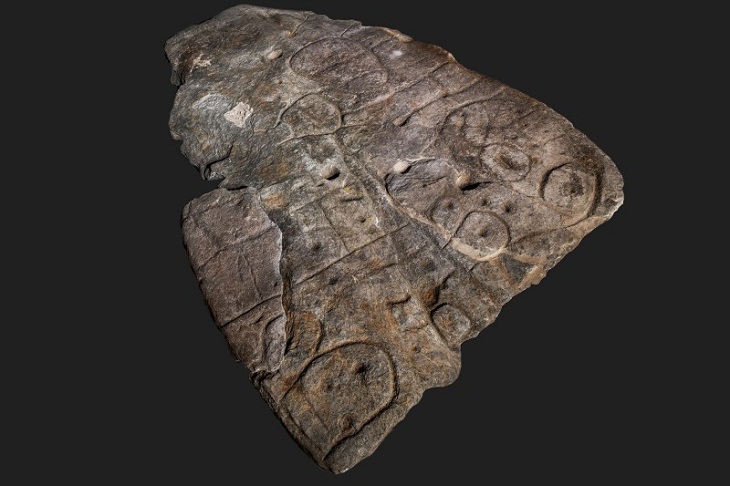In August 2021, researchers from the European Institute for Underwater Archeology investigating the submerged metropolis of Thônis-Heracleion in the Egyptian bay of Abū Qīr found wicker fruit baskets dating to the fourth century BC. The most incredible part of the discovery was that the baskets still contained doum nuts - the fruit of an African palm tree considered sacred by ancient Egyptians - along with grape seeds and Greek ceramics.
“Nothing was disturbed,” marine archeologist Franck Goddio, who led the team, was quoted as saying. “It was very striking to see baskets of fruits.” He further said that the doum nuts had been untouched for over 2,000 years!
2. The Atacama skeleton
In 2003, a mummified skeleton was discovered in Chile’s Atacama Desert, which left scientists perplexed. The six-inch-tall skeleton had a pointed head and the bone density of a 6-year-old. This wasn’t all – the female mummy had a long, angular skull, slanted eye sockets, and 10 pairs of ribs rather than the normal 12. Questions surrounding the mysterious skeleton, dubbed Ata, led to various speculations over the years. There were even theories that Ata was an alien!
In 2018, a team of scientists finally revealed that Ata was a human with multiple bone disease-associated mutations. Scientists came to this conclusion based on five years of genomic analysis. The researchers aren’t sure what exactly caused Ata’s skeletal malformation but note that she was most closely related to indigenous Chileans and had some European ancestry as well.
3. Injured zoo animals in ancient Egypt
Hierakonpolis, an ancient Egyptian town, was revered as the early capital of the Kingdom of Upper Egypt. The wealthy residents of the town liked to boast their wealth by keeping exotic pets. During an excavation in a cemetery there, archeologists stumbled upon the skeletons of two elephants, a hippo, and several baboons, among many other animals. Curiously, though, the skeletons of several of the baboons and the hippo revealed signs of healed bone fractures. Researchers say that the animals might have gotten hurt while being tied in a place or during their capture. They explain that the bones would have only healed while the animals were protected, indicating that they must have been kept in captivity.
4. A "Lost Golden City" near Luxor
A team of archeologists has unearthed a "Lost Golden City" near Luxor (ancient Thebes) in Egypt. Known as the "The Rise of Aten," the city consists of several houses, a large bakery, numerous burials, a zigzag fence, a production area for mud bricks, and administrative buildings. The archeologists also found dozens of casting molds that were likely used to make amulets and decorative items. The city has been buried under Luxor for the past 3,000 years.
Hieroglyphic inscriptions found on clay caps of wine vessels at the site suggest that the 18th-dynasty pharaoh Amenhotep III (1386–1353 BC) had three royal palaces in the city.
The city’s existence had been known for years, but it kept eluding archeologists until now.
5. Europe's oldest three-dimensional map
A freshly unearthed Bronze-Age stone slab found in France is, according to researchers, the oldest three-dimensional map in Europe. The 4,000-year-old stone slab measuring 2 x 1.5 m (5 x 6.5 ft) has a series of engravings that are believed to represent the Odet River and its valley in western France. Other lines show the region’s river network.
Researchers believe that the piece of rock, known as the Saint-Bélec Slab, dates back to the early Bronze Age, between 1,900 BC and 1,650 BC. It may have been used by a king to depict the territory he ruled.
The Saint-Bélec Slab was first discovered in 1900 in a prehistoric burial ground in Finistère, in western Brittany, but was then forgotten for over a century. Finally, in 2014, it was found in a cellar of a castle.
6. World's oldest pet cemetery
Excavations at the ancient Red Sea port of Berenice (Berenike) have revealed what the Guinness World Records calls the “oldest pet cemetery.” The 2,000-year-old pet cemetery was discovered by a team of Polish archeologists and is believed to be from the 1st or 2nd century AD. It contains the remains of 536 cats, 32 dogs, several small monkeys, a juvenile baboon, and a few other animals. Many of the animals were found buried wearing metal or delicately beaded collars and were covered in fabric or ceramics, indicating that they had been treated with loving care.
No evidence of mummification, sacrifice, or any other religious ritual was found, as has been seen in other ancient animal grave sites.
7. Rare evidence of Roman crucifixion in England
In 2021, a team of archeologists from Cambridgeshire found the skeleton of a man with a nail in his foot. The researchers believe it to be rare evidence of Roman crucifixion. Although crucifixion was thought to be a common form of capital punishment in the Roman era, very few examples of it have been found in archaeological excavations. This one is the fourth known crucifixion in the world and, admittedly, the best-preserved one to date.
The archeologists believe the man, who may have been a slave, was crucified when he was between 25 and 35 years old and had likely been shackled to a wall for a long time before his crucifixion. The burial dates to the third or fourth century BC.
8. A 2,000-year-old carving of a cat on a hillside in Peru

Peruvian archeologists uncovered a 120-foot-long (36.5 m) feline figure carved on a desert hillside in Nazca, Peru, in 2020. According to Peru's Ministry of Culture, the ancient geoglyph (large design or motif produced on the ground by clastic rocks) dates back to 200-100 BC.
The figure - made up of a long body, striped tail, and pointed ears - is part of the country's famous Nazca Lines UNESCO Heritage Site, home to hundreds of mysterious geoglyphs dating back more than 2,000 years. These lines can only be seen from the air and include depictions of a monkey, spider, pelican, whale, dog, and lizard.
"Representations of this type of feline are frequently found in the iconography of ceramics and textiles in the Paracas society," a statement from the ministry notes.
No one knows for sure why the Nazca Lines were drawn or why they were so huge. However, they are stunning reminders of Peru's rich past.
Share this post with your friends and family





